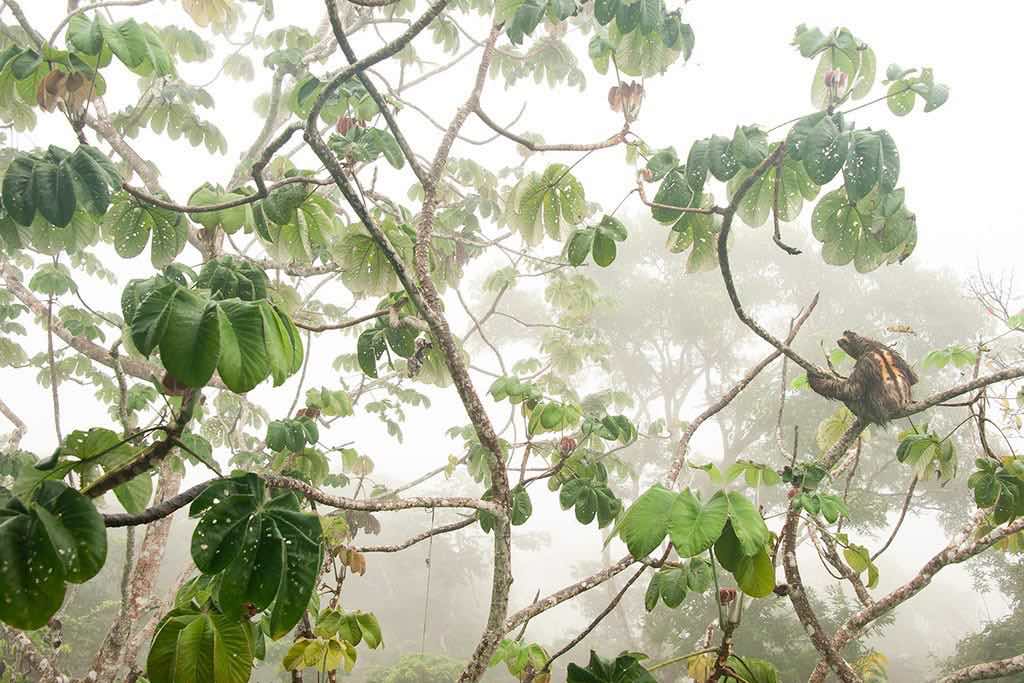Our partner from the Royal BC Museum, Julie Ovenell, is part of the team working on the 55th annual Wildlife Photographer of the Year exhibition and was kind enough to write a guest post for us about the exhibit. For this piece she interviewed an in-house expert about the benefits of “close looking” – a valuable skill that can be applied to the current exhibition or anywhere else your Clipper travels take you!
It’s back! The ever-popular Wildlife Photographer of the Year exhibition returns to the Royal BC Museum from February 14 – March 29, 2020 for an exclusive Western Canadian engagement. This family-friendly exhibition, now in its 55th year, comes from the Natural History Museum in London, and showcases outstanding nature photography from around the world.
A favorite day trip for Seattleites via the Clipper, it’s just a short walk from the ferry dock in Victoria’s Inner Harbour to the museum, where huge backlit displays feature 100 compelling images such as grand prize winner Yongqing Bao’s The Moment. His remarkable photograph of a confrontation between a Tibetan fox and a marmot – at once hilarious and harrowing – fully captures the drama and intensity of the natural world.
It’s a visual feast to be sure. But before you tuck in to all that creative goodness, take a few pointers from India Young, Art and Images Curator at the Royal BC Museum, on how to look at art.
With a PhD in art history, Young stewards more than 10,000 works of art in the museum collection and has spent decades refining her “close looking” skills. It’s helpful, she says, to look at art the way you’d read a book: “A sentence has grammar, and an image has a kind of grammar too. And when all the pieces fit in the right order – light, color, balance, perspective, subject matter – it feels exactly right.”
Here are Young’s Top 5 tips for how to boost your understanding and appreciation of any museum exhibition or art show.

Trust yourself:
Young says Hollywood movies “have historically played into the idea that the art world is exclusionary and elitist.” But she credits social media platforms (and the Internet in general) for “transforming the way we engage with the world visually. We are all much more visually literate now and have an innate understanding of what makes a great image. So you shouldn’t feel intimidated when you enter a gallery; you already know how to read things into images. The Internet has taught us how to share and interpret knowledge and experiences visually. Thank you, Instagram!”

Slow down:
“Museums are a great place to take time,” says Young. “You don’t need to race though and see the whole exhibition to get value from the experience. Stay with what you like and look closely. Be curious and ask yourself questions: Where is that beam of light coming from? How did the photographer capture that moment, and not the one before or after? What is it about this image that resonates for me? What can I know or trust from this image? This is where an annual membership really comes into its own because I guarantee the more time you can spend with one single artwork, the more you’re going to see things that spark your curiosity and lead you deeper into the piece.”

Get (un)comfortable:
“There are some challenging images in the Wildlife Photographer of the Year exhibition, but try not to turn away too quickly,” says Young. “Art is all about conveying emotion. The best reason to stay with things that make you uncomfortable is that in that moment you can be sure you are learning something. When you find yourself having a strong negative reaction, ask yourself: Why does this make me uncomfortable? How are my values being challenged by this? What needs to change here?”

Read the label:
“Context is incredibly important to art appreciation,” says Young. “We all come with our own knowledge and world views, and everyone is more knowledgeable than they think so we can always bring something to a piece of art. But you’ll experience the work in a richer way when you know it better in relation to other things. We have been habituated to not read, but it’s important – and enriching – to slow down and read museum labels.”

Bring a friend:
Young prefers to see an exhibition with a friend – or even a group of friends, “so that we can come together afterwards and talk about what we saw, like after going to a movie together. We all see through different lenses and people often have very different emotional responses to a piece of art. It’s interesting to learn why, and it helps you find new perspectives.” She particularly enjoys going to exhibitions with her young nephews because “different things jump out for kids.” She recommends helping kids to see more closely by playing ‘the full 20 Questions.’ Ask them: What is that animal? Do you think it’s a girl or a boy? Where does it live? Have you been there? What does it make you feel? Says Young: “I promise you their answers will inspire you to look at the image differently!”

Situated on the traditional lands of the Lekwungen people, the Royal BC Museum is one of Canada’s cultural treasures. The museum’s collections, research and presentations tell the stories of British Columbia in ways that enlighten, stimulate and inspire. Wildlife Photographer of the Year exhibition: February 14 — March 29, 2020.
Feature photo: David Bartus from Pexels

